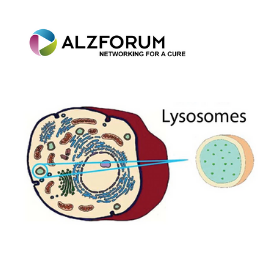 A toxic brew of lysosomal lipids, reactive iron atoms, and oxidative stress can spell doom for human neurons. This is the upshot of the first-ever CRISPR screens at the genome-wide level in these cells. Researchers led by Martin Kampmann at the University of California, San Francisco, used the genome-editing tool to dial up or down expression of each protein-coding gene in the human neuronal genome. They uncovered a surprising connection between endolysosomal processing and the iron-dependent cell-death pathway called ferroptosis.
A toxic brew of lysosomal lipids, reactive iron atoms, and oxidative stress can spell doom for human neurons. This is the upshot of the first-ever CRISPR screens at the genome-wide level in these cells. Researchers led by Martin Kampmann at the University of California, San Francisco, used the genome-editing tool to dial up or down expression of each protein-coding gene in the human neuronal genome. They uncovered a surprising connection between endolysosomal processing and the iron-dependent cell-death pathway called ferroptosis.
- First genome-wide CRISPR [1] screens in human neurons tweaks gene expression.
- Endolyosomal function, oxidative stress, and iron homeostasis genes key to neuronal survival.
- Sans lysosomal prosaposin, neurons might die by ferroptosis.
- Data available on CRISPRbrain, a communal database.
Zeroing in on that pathway, the researchers found that in the absence of the lysosomal enzyme prosaposin, glycosphingolipids accumulate in the lysosomes, setting off oxidative stress. This results in a toxic mesh of ferrous ions and peroxidized lipids that can kill neurons. The findings connect pathways that have been implicated separately in neurodegenerative disease, and support the idea that iron-rich “aging pigments,” commonly spotted in older brains, might not be so benign after all.
The findings were posted in a manuscript on bioRxiv on February 5 and the data is the first entered into CRISPRbrain [2], a communal database in which researchers can share CRISPR screening data gathered from different cell types.